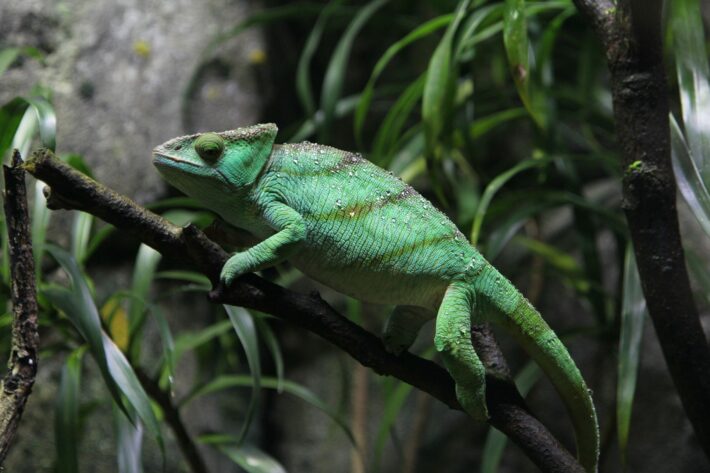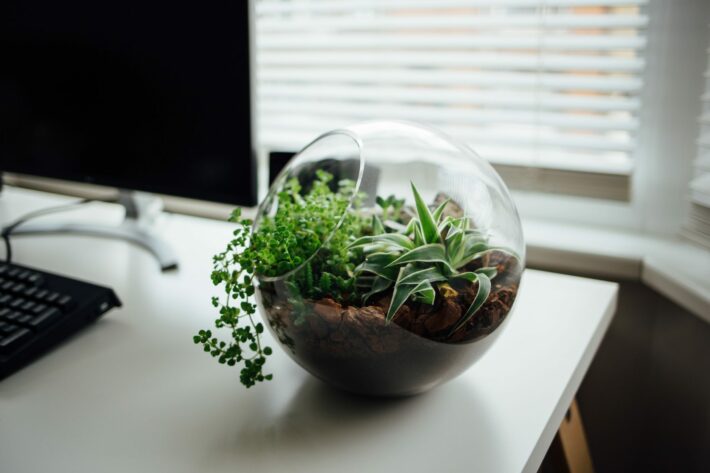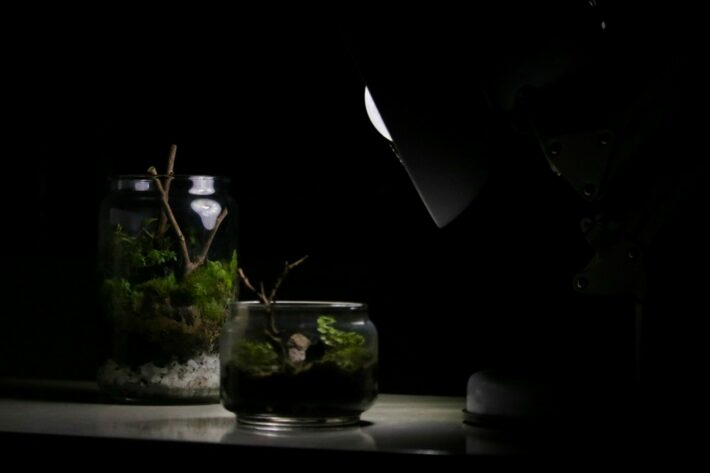Are you a reptile enthusiast looking to provide the best habitat for your scaly friend? Setting up a reptile enclosure or terrarium requires careful planning and attention to detail. Whether you have a bearded dragon, leopard gecko, or corn snake, creating an optimal environment is essential for their well-being.
In this comprehensive guide, we’ll walk you through the step-by-step process of setting up a reptile enclosure that mimics their natural habitat. From selecting the right enclosure size to creating the perfect temperature and humidity levels, we’ll cover all the crucial aspects to ensure a comfortable and thriving home for your reptilian companion. Get ready to transform your reptile’s enclosure into a paradise they’ll love to call home!
What are the essential components for setting up a reptile enclosure or terrarium?
When setting up a reptile enclosure or terrarium, several essential components are required. These include a suitable enclosure or tank, appropriate substrate, heating and lighting systems, thermometers and hygrometers for monitoring temperature and humidity, hides or shelters, water dishes, and appropriate decors such as branches or rocks.
Additionally, you may need a thermostat to regulate the temperature, a UVB light source for reptiles that require it, and a reliable source of clean water. By ensuring you have all these components, you can create a comfortable and safe environment for your reptile.
How do I choose the right size of enclosure for my reptile?

Selecting the correct size of the enclosure is crucial for the well-being of your reptile. The size should be appropriate for the species and its adult size. Research the specific requirements of your reptile species to determine the minimum recommended enclosure dimensions.
As a general guideline, the enclosure should provide ample space for the reptile to move, stretch, and exhibit natural behaviors. It should accommodate hiding spots, basking areas, and room for any required accessories. Remember to consider the reptile’s growth potential and plan for future enclosure upgrades as needed.
What are the key factors to consider when selecting the substrate for a reptile enclosure?
When choosing the substrate for a reptile enclosure, several factors come into play. Consider the species’ natural habitat and replicate it as closely as possible. Factors to consider include the substrate’s ability to retain moisture, its ease of cleaning, and its suitability for burrowing or nesting behaviors.
Popular substrates include reptile carpets, coconut fiber, bark chips, and paper towels. Avoid using substrates that could be ingested and cause intestinal blockages. Always prioritize the safety and comfort of your reptile when selecting a suitable substrate for their enclosure.
How can I create the ideal temperature gradient within a reptile terrarium?
Establishing a temperature gradient within a reptile terrarium is essential for providing a suitable habitat. Place a heat source, such as a heat mat or heat lamp, at one end of the enclosure to create a warm basking spot. This spot should reach the reptile’s preferred basking temperature.
The opposite end should be cooler, allowing the reptile to regulate its body temperature by moving between the warm and cool areas. Use a thermometer to monitor and adjust the temperatures accordingly. Providing this temperature gradient allows your reptile to thermoregulate effectively, promoting overall health and well-being.
What is the recommended humidity level for different types of reptiles?
The recommended humidity level varies depending on the species of reptile you have. Research the specific requirements of your reptile to determine the optimal humidity range. Generally, tropical or rainforest reptiles require higher humidity levels, typically ranging from 60% to 80%.
Desert-dwelling reptiles, on the other hand, require lower humidity levels, usually around 30% to 40%. To maintain the appropriate humidity, you can use misting systems, water bowls, or specific substrates that retain moisture. Regularly monitor and adjust the humidity levels as needed to ensure your reptile’s health and well-being.
How do I provide adequate lighting in a reptile enclosure?
Proper lighting is crucial for reptiles as it helps regulate their biological processes. There are two main types of lighting to consider: heat and UVB. Heat lamps provide the necessary warmth for thermoregulation, while UVB lamps simulate natural sunlight, enabling reptiles to synthesize vitamin D3 and maintain healthy bones.
Position the lamps according to the specific requirements of your reptile species. Consider using a timer to establish consistent day and night cycles. Remember to regularly replace the bulbs according to the manufacturer’s instructions to ensure they provide the appropriate light spectrum.
What types of hides or shelters should I include in a reptile terrarium?
Including suitable hides or shelters in a reptile, terrarium is vital to provide security and privacy for your reptile. Depending on your reptile’s needs, you can use a variety of hiding spots, such as caves, logs, or artificial rock formations.
Provide at least one hide on each end of the temperature gradient, ensuring the reptile has options in both the warm and cool areas. The hides should be appropriately sized, allowing the reptile to enter comfortably but still feel snug and secure. Having multiple hiding spots replicates the natural environment and reduces stress for your reptile.
How can I ensure proper ventilation in a reptile enclosure?

Ensuring proper ventilation in a reptile enclosure is crucial for maintaining air quality and preventing the buildup of excessive humidity or stale air. To achieve this, incorporate ventilation panels or mesh sections in the enclosure design. These allow for adequate air circulation without compromising the security of the enclosure.
Additionally, be mindful of the placement of heating and lighting equipment to prevent any potential blockage of airflow. Regularly monitor the enclosure’s ventilation, and adjust as necessary to maintain a healthy and comfortable environment for your reptile.
What types of plants are suitable for a reptile terrarium setup?
Including live plants in a reptile, a terrarium provides aesthetic appeal, environmental enrichment, and even natural hiding spots. When selecting plants, consider those that thrive in the specific lighting and humidity conditions required by your reptile species.
Some reptile-safe plant options include pothos, spider plants, bromeliads, and snake plants. Avoid toxic plants that may pose a risk if ingested by your reptile. Research and choose plants that are hardy, easy to maintain, and compatible with the environmental needs of your reptile’s enclosure.
How often should I clean and sanitize a reptile enclosure?
Maintaining a clean and sanitary reptile enclosure is vital for the health and well-being of your pet. Regular cleaning schedules will vary depending on the reptile species, enclosure size, and substrate used. In general, spot-clean the enclosure daily by removing feces, uneaten food, and soiled substrate.
Perform a thorough cleaning of the entire enclosure, including disinfection, on a weekly or monthly basis, depending on the needs of your reptile. Use reptile-safe disinfectants and follow the manufacturer’s instructions carefully. Maintaining a clean enclosure helps prevent the growth of harmful bacteria and parasites.
What are the important considerations when setting up a water source for my reptile?
Providing a suitable water source is crucial for your reptile’s hydration and overall health. Consider the following factors when setting up a water source:
- Size and depth: Ensure the water dish is large enough for your reptile to soak in if needed, but shallow enough to prevent drowning.
- Accessibility: Place the water dish in a location that is easily accessible for your reptile without obstruction.
- Cleanliness: Regularly clean and replace the water to maintain hygiene and prevent bacterial growth.
- Water quality: Use dechlorinated water or water treated specifically for reptiles to avoid harmful chemicals.
- Species-specific needs: Research your reptile’s species to determine any specific water requirements, such as the need for misting or a humidity chamber.
- Are there any specific dietary requirements I need to meet when setting up a reptile enclosure?
Dietary requirements vary among reptile species, so it’s crucial to understand the specific needs of your pet. Research the appropriate diet for your reptile, including the types of food, feeding frequency, and any supplementation necessary.
Some reptiles are carnivores, requiring live or frozen prey, while others are herbivores or omnivores that need a variety of vegetables, fruits, and insects. Ensure a balanced diet rich in essential nutrients, vitamins, and minerals. Consider consulting with a reptile veterinarian or an experienced reptile keeper to develop a proper feeding plan for your reptile.
How do I create a naturalistic environment in a reptile terrarium?
Creating a naturalistic environment in a reptile terrarium is important to promote natural behaviors and provide mental stimulation for your reptile. Consider the following elements:
- Substrate: Use a substrate that mimics the reptile’s natural habitat, such as sand, soil, or forest floor bedding.
- Decor: Add branches, rocks, or other natural-looking elements to create climbing opportunities and hiding spots.
- Plants: Incorporate live or artificial plants to mimic the natural environment and provide visual barriers.
- Enrichment: Include objects like puzzle feeders, basking platforms, or tunnels to encourage exploration and activity.
- Lighting: Provide appropriate lighting that mimics natural sunlight and promotes a day-night cycle.
By replicating these natural elements, you can create a more engaging and stimulating environment for your reptile.
This table provides valuable information about creating a naturalistic environment in a reptile terrarium.
| Elements | Description | Benefits |
|---|---|---|
| Substrate | Use natural substrates like coconut fiber or sand to mimic the reptile’s natural habitat. | Provides a realistic and comfortable environment for the reptile to burrow and exhibit natural behaviors. |
| Decor | Add branches, rocks, and artificial plants to create climbing opportunities and visual barriers. | Offers stimulation, exercise, and hiding spots, reducing stress and promoting natural behaviors. |
| Plants | Incorporate live or artificial plants to replicate the reptile’s natural habitat. | Enhances the aesthetic appeal, provides visual barriers, and improves air quality within the enclosure. |
| Enrichment | Include objects like puzzle feeders, basking platforms, or tunnels to encourage exploration and activity. | Promotes mental stimulation, and physical exercise, and reduces boredom, resulting in a healthier reptile. |
| Lighting | Provide appropriate lighting that mimics natural sunlight and promotes a day-night cycle. | Helps regulate reptile’s biological processes, supports vitamin D3 synthesis, and maintains natural circadian rhythms. |
What safety measures should I take when setting up heating elements in a reptile enclosure?
When incorporating heating elements in a reptile enclosure, it’s essential to prioritize safety. Consider the following measures:
- Use appropriate heat sources: Select heating elements designed specifically for reptile enclosures, such as heat mats, heat bulbs, or ceramic heat emitters.
- Temperature regulation: Utilize thermostats or temperature controllers to prevent overheating and maintain a consistent temperature.
- Proper placement: Position heat sources securely to avoid contact with the reptile or the enclosure’s flammable materials.
- Monitor regularly: Use thermometers to monitor the temperature and ensure it remains within the desired range.
- Maintain a safe distance: Ensure there’s sufficient space between the heat source and the reptile to prevent burns or discomfort.
By following these safety precautions, you can provide a warm and safe environment for your reptile.
How can I prevent common issues like mold or mites in a reptile terrarium setup?

To prevent issues like mold or mites in a reptile terrarium, consider the following measures:
- Substrate maintenance: Regularly clean and replace the substrate to minimize the risk of mold growth. Ensure the substrate is dry before placing it back into the enclosure.
- Proper humidity control: Maintain appropriate humidity levels to discourage mold growth. Use a hygrometer to monitor and adjust humidity as needed.
- Regular cleaning and disinfection: Clean and sanitize the enclosure regularly, removing any organic matter that could attract mites. Use reptile-safe disinfectants and follow proper cleaning procedures.
- Quarantine new additions: Quarantine new reptiles or any items introduced to the enclosure to prevent the introduction of mites or other pests.
- Observation and early intervention: Regularly inspect the enclosure and your reptile for signs of mold, mites, or other issues. If you notice any problems, take prompt action to address and resolve them.
By implementing these preventative measures and practicing good hygiene, you can maintain a healthy and problem-free reptile terrarium.
In the final analysis
Setting up a reptile enclosure or terrarium requires careful consideration and attention to detail. By providing the essential components such as suitable enclosures, appropriate substrates, heating and lighting systems, and hides or shelters, you can create a comfortable and safe environment for your reptile.
Understanding the specific needs of your reptile species regarding temperature, humidity, and dietary requirements is crucial for their overall health and well-being. Creating a naturalistic environment with elements like substrate, decor, plants, enrichment, and proper lighting adds value by promoting natural behaviors, mental stimulation, and maintaining a healthy habitat. By following these guidelines, you can ensure a happy and thriving reptile in their enclosure.




